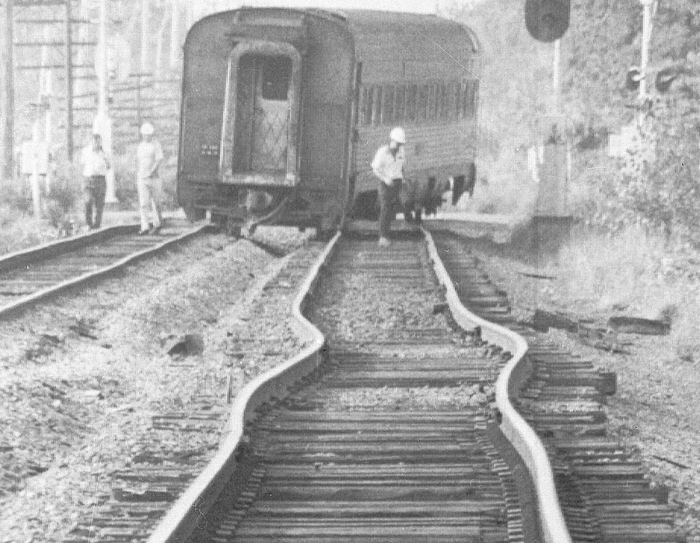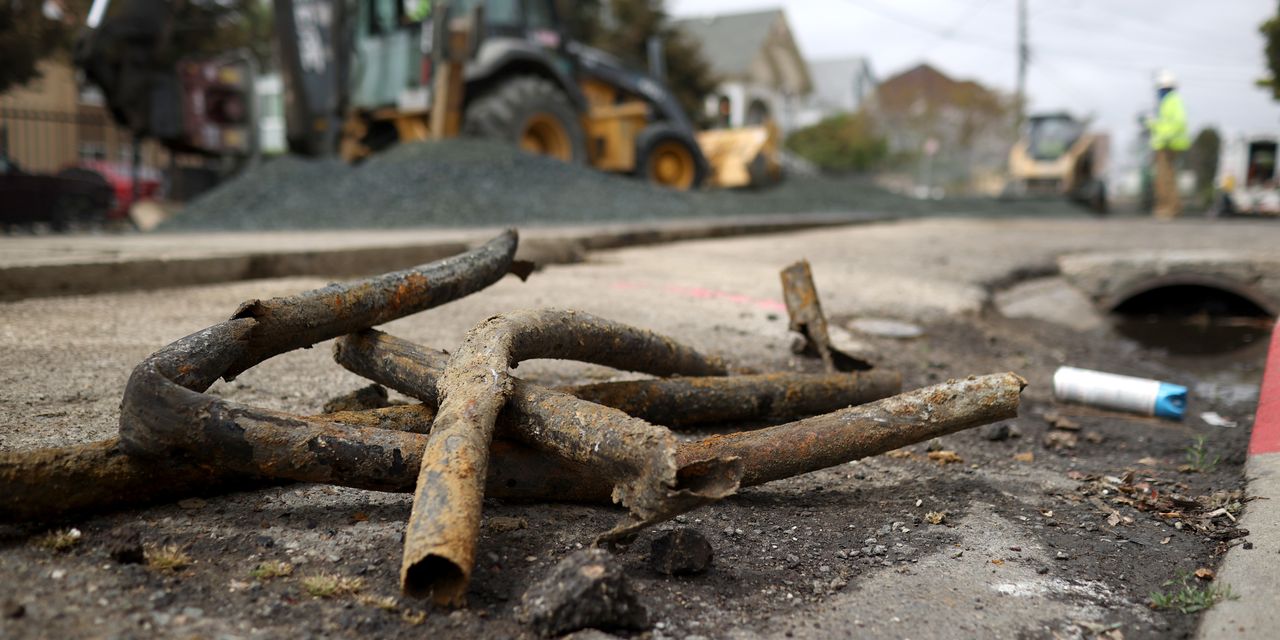Blistering, buckling, breaking down.
The summer that is coming to an end in the northern hemisphere was the second hottest ever in North America and Asia, and the hottest ever in Europe, per the National Oceanic and Atmospheric Administration.
These heat waves are shattering records for intensity, frequency and duration — and inflicting a mounting toll, not just on people, animals, crops, water supplies and more, but on infrastructure that wasn’t built for this sizzling new normal.
What can we do? I’ll get to that in a second. But first, here are a few examples of what heat is doing to our infrastructure.
Electric cables can melt. Power outages can occur.
Roads can buckle. “Pavement failures or blowouts occur when prolonged high temperatures cause the road to expand and buckle up or blow out, resulting in uneven driving surfaces,” says the Illinois Department of Transportation. The police department in Hays, Kansas, posted this photo:

Real estate is vulnerable. All that heat beating down can damage roofs, paint, wood, even a building’s foundation. “The effects of this excessive heat on homes are not to be underestimated,” warns Washington, D.C., real estate firm The Goodheart Group. As if the housing market isn’t under enough stress right now.
Air travel is hurt. Hot air makes it harder for planes to fly. Outright cancellations can occur, and when takeoffs are permitted, it takes more power to get a plane off the ground — adding to fuel costs (and like roads, airport runways can also buckle).
Railroad tracks are affected. We barely avoided a crippling railway strike last week, but there’s not much we can do when intense heat causes steel to expand and buckle. Trains can still run, but at slower speeds, which jack up delivery costs for freight. Meantime, in Britain, they’re painting tracks white, hoping it will help reflect heat.

AP
Playgrounds are too hot to touch. Perhaps you’ve seen the stories. Kids rushed to emergency rooms howling in pain, with hands or feet scalded by burns. A recent study by Dr. Jennifer Vanos of the University of California, San Diego, says touching playground equipment — metal, rubber, plastic — can inflict second-degree burns in as little as three seconds, and devastating third-degree burns in five seconds. One parent said: “It doesn’t have to be super-hot days, and there doesn’t have to be direct sunlight,” for such injuries to occur.
There are more examples, but you get the idea. Hot weather is affecting infrastructure every which way.
America’s rusting, dilapidated infrastructure just got $1 trillion, thanks to a bill signed into law by President Biden last fall.
But a lot more is needed. A recent S&P Global report, for instance, estimated that about $2.1 trillion is needed over the next decade for infrastructure rebuilds in general. It doesn’t say how much of this is related to heat-related problems, but the above problems suggest that costs will rise as the temperatures do.
Innovation will help. Take flash flooding, which can be caused by extreme heat (warm air can hold more moisture). One storm alone caused the Dallas-Ft. Worth area an estimated $6 billion in damage last month; much of that might have been mitigated had the region used a new form of concrete that can absorb huge amounts of water. Here’s a demonstration via Tarmac Technologies.
Then there are wildfires, often sparked by hot, dry conditions — a growing danger in broad swaths of the western U.S. Windows are often the first thing to go, shattering in the heat. Retrofits with double-paned windows, with one pane of tempered glass, can reduce the risk, says Home Innovation Research Labs, an independent subsidiary of the National Association of Home Builders.
Meanwhile, embers and flames can be blocked off by better sealing of crawl spaces and eaves. All of this can increase housing costs, though it could lower homeowners insurance.
What about air travel? Aircraft manufacturers like Boeing
BA,
and Airbus
AIR,
are always looking for ways to reduce weight, thus allowing for easier takeoffs. But hot weather is such that airlines may have to move takeoffs to cooler morning or evening hours — thus helping their fleets to take off safely, though this could inconvenience travelers.
And those scorching playgrounds? Metal, plastic, rubber — there’s not really a way at the moment to make them cooler to the touch. Here, shade, allowing kids to play, if possible, off-hours appear to be the answer. Another answer may be to simply retreat and move facilities indoors, if possible. Or wait until fall — which thankfully has now begun.
